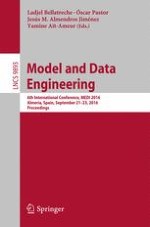2016 | Buch
Model and Data Engineering
6th International Conference, MEDI 2016, Almería, Spain, September 21-23, 2016, Proceedings
herausgegeben von: Ladjel Bellatreche, Óscar Pastor, Jesús M. Almendros Jiménez, Yamine Aït-Ameur
Verlag: Springer International Publishing
Buchreihe : Lecture Notes in Computer Science
